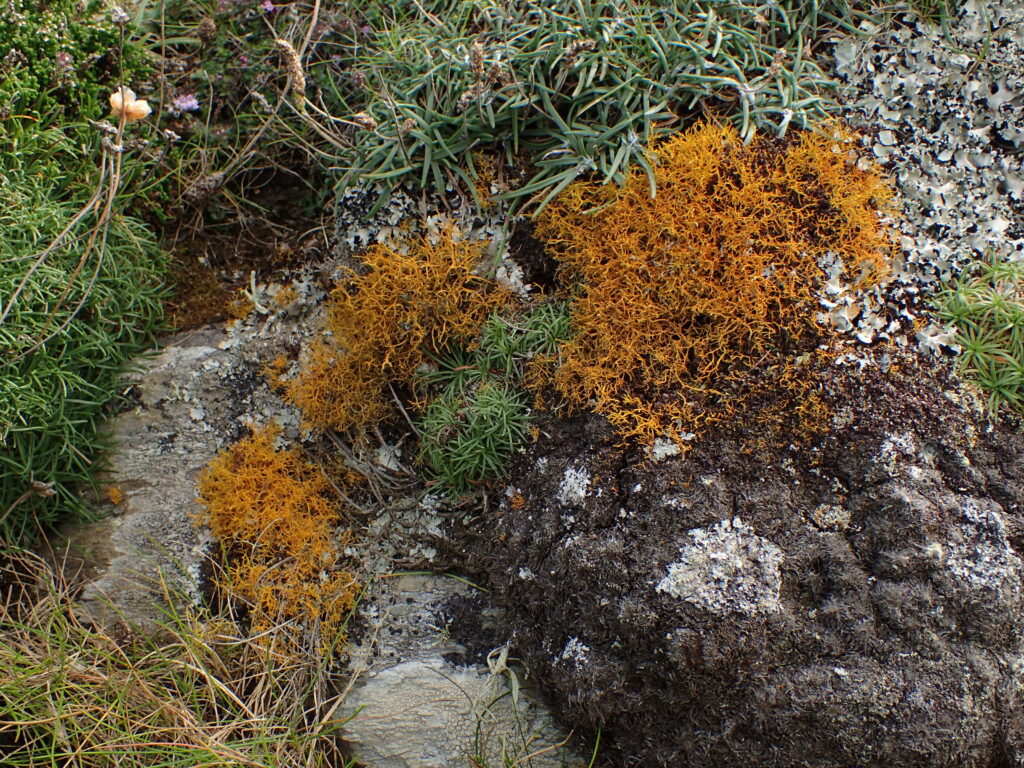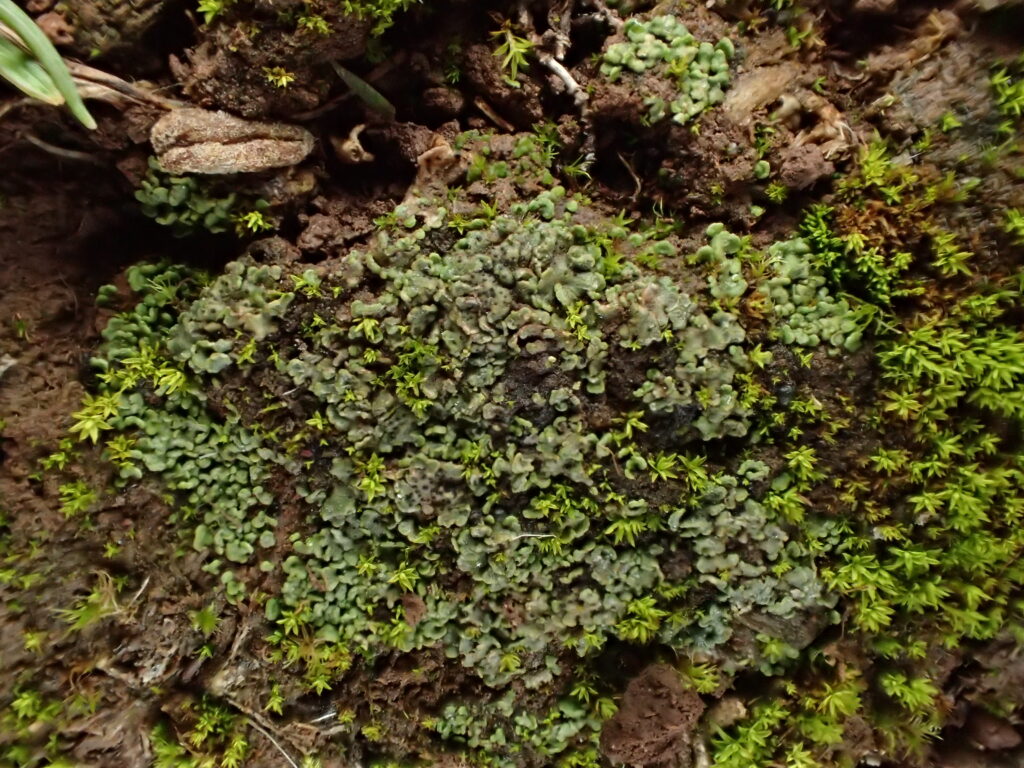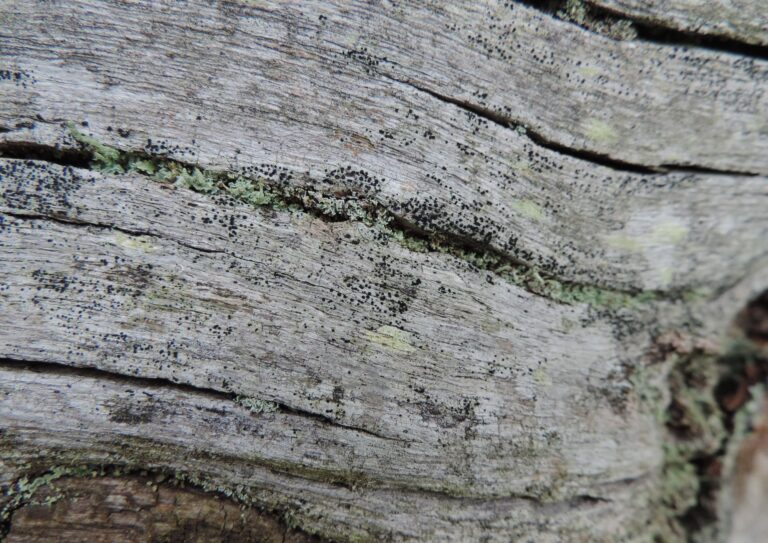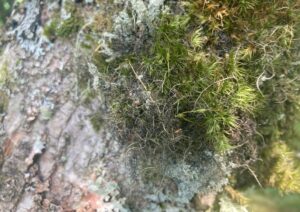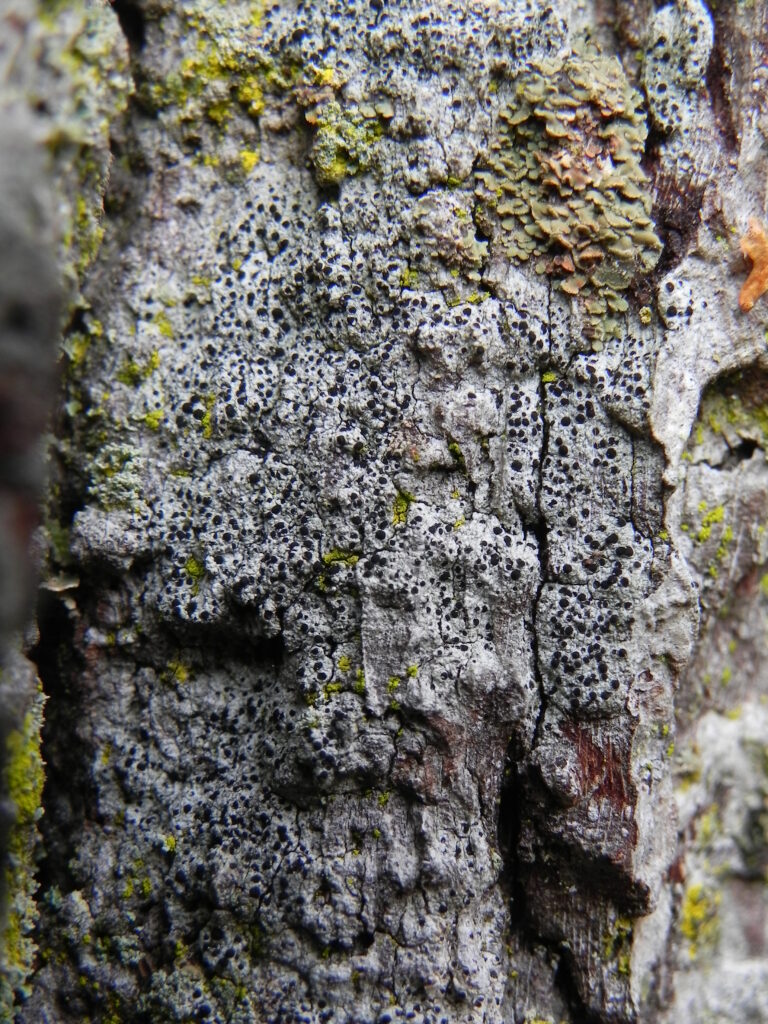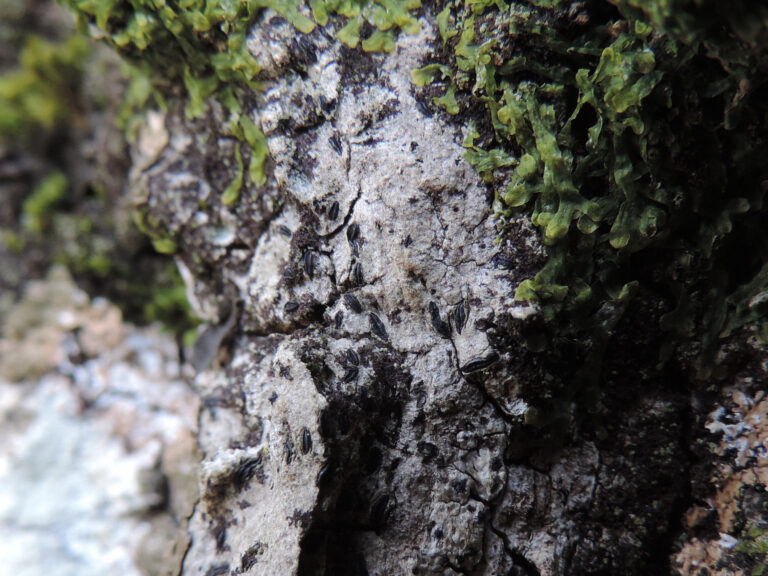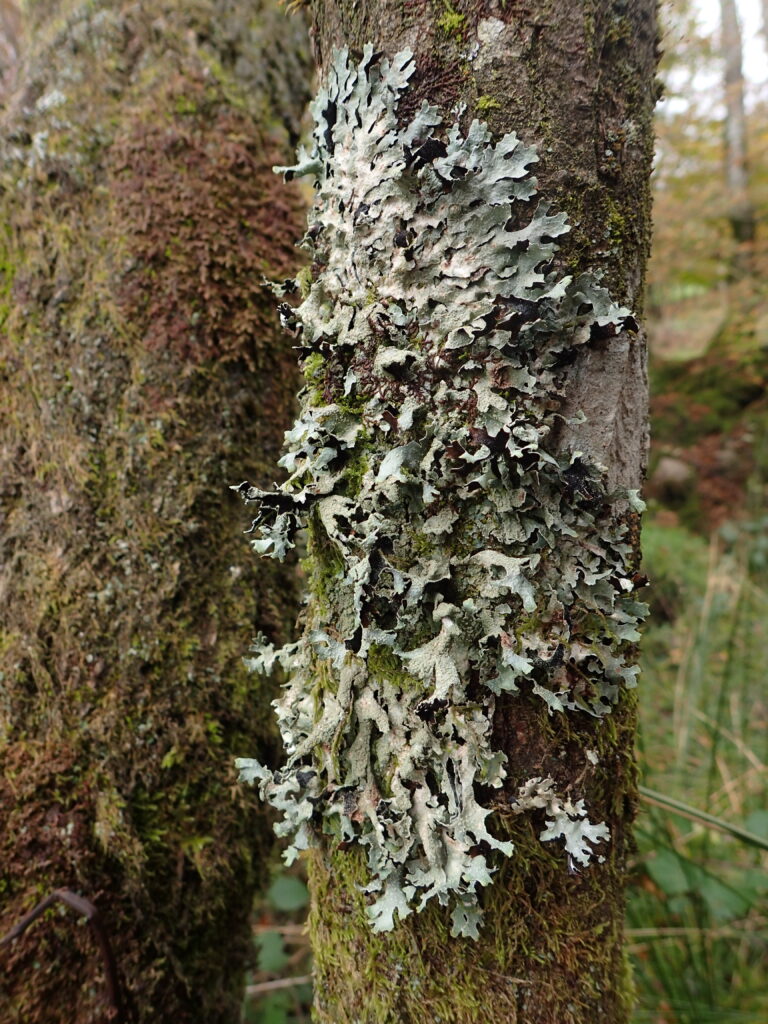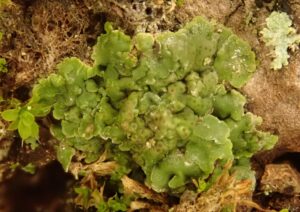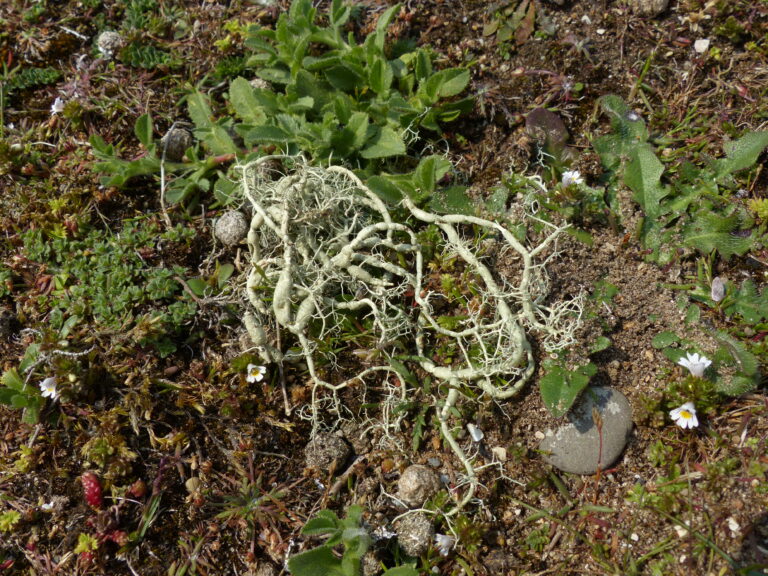Lichens are complex organisms comprising at least one fungus partnered with an alga or cyanobacteria (photobiontThe photosynthetic partner in a lichen. This is usually a green alga or a cyanobacterium that produces food for the entire organism through photosynthesis (using sunlight, water, and carbon dioxide). More). This symbiotic relationship allows the species to inhabit harsh environments where neither could survive alone.
The fungus forms the greatest part of a lichen. It absorbs nutrients and water, anchors the lichen in place and protects the photobiont from drying out. The photobiont produces sugars through photosynthesis, which is why many lichens generally prefer sunny positions.
Lichens have developed in various growth forms, including crustose (crust-like), foliose (leaf-like), and fruticose (shrub-like). A number of different lichen communities also develop in response to the variety of growing conditions, including substrateA surface or material than an organism lives, grows or feeds on. More, humidity, nutrient enrichment, and levels of light. As examples, Parmelion lichens typically grow on trees with very acidic bark, saxicolous lichens grow on rocks, and terricolous communities grow largely on consolidated soil.
Lichens have a crucial role in many ecosystems and can break down rocks and other materials, helping to create soil in environments where it is scarce. In addition, the organic matter produced by lichens can contribute to soil fertility and support the growth of other plant species. Lichens are also microhabitats that provide shelter, food, and moisture for a variety of invertebrates, particularly springtails, oribatid mites and barkflies, as well as fungi and other organisms.
Lichens absorb nutrients and water directly from the air and so are sensitive to airborne pollutants. The greatest diversity of species grows in areas with clean air, although some lichens can survive polluted conditions, such as high levels of atmospheric ammonia.
See the Devon Species of Conservation Concern spreadsheet and Devon Special SpeciesDevon Species of Conservation Concern which have been 'shortlisted' as needing particular action or attention (rather than being iconic species). More/Groups below. To read the detailed profile for each group see links in Find out more below.

